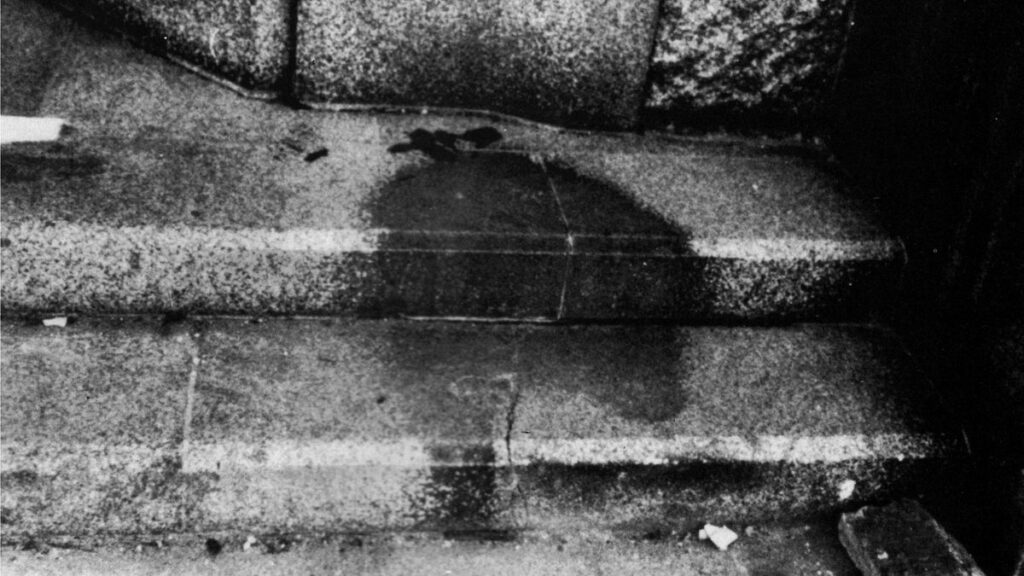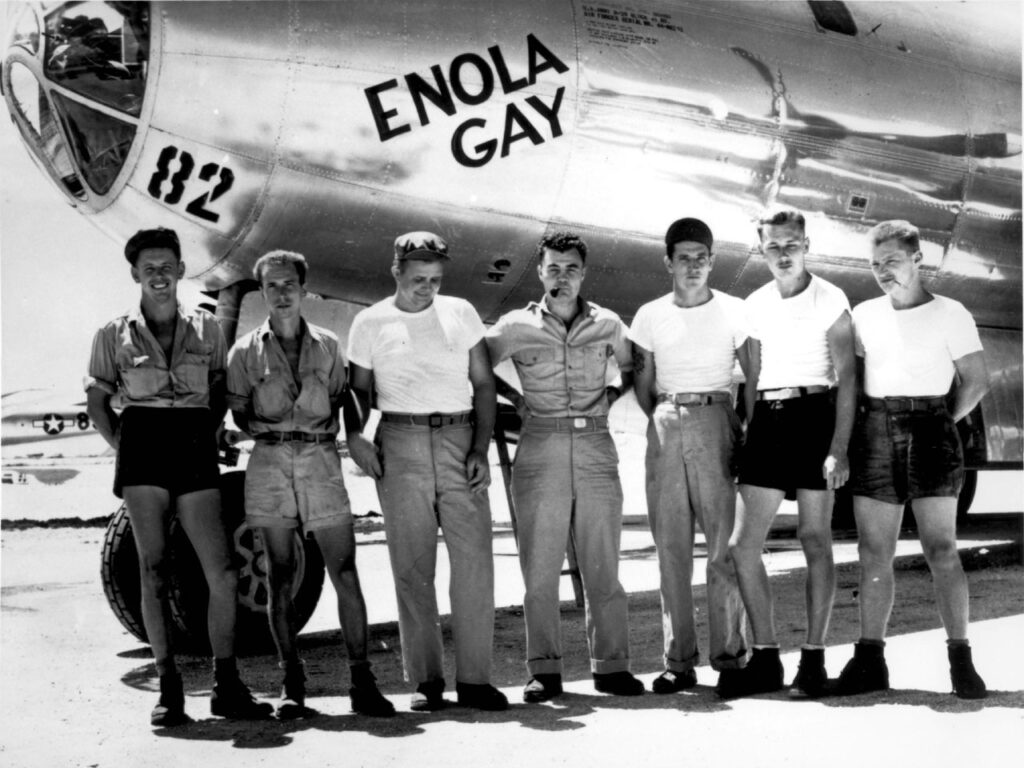Shadows of Hiroshima: Testaments to Unimaginable Tragedy

August 6, 1945, marked a cataclysmic turning point in human history. The city of Hiroshima, Japan, became the epicenter of one of the most devastating events of the 20th century when the United States dropped the first atomic bomb.
Amidst the widespread destruction and unimaginable human suffering, the shadows left behind by the victims etched a haunting legacy of the horrors of nuclear warfare.

The Unthinkable Unleashed
The United States spent three years and millions of dollars during World War II to develop a revolutionary form of warfare: the atomic bomb.
On the morning of August 6, 1945, US military forces unleashed the bomb onto the world. The Enola Gay dropped the bomb on the Japanese city of Hiroshima.
The detonation unleashed an immense burst of energy and heat. It instantly obliterated the city and left in its wake a landscape of unimaginable devastation.
Although not directly referenced, the movie Oppenheimer briefly explores the utter destruction wrought by the bomb. It highlights the titular character’s guilt for his role in its development.
Buildings crumbled, fires raged, and countless lives were extinguished within moments. But amidst all the destruction, something unprecedented occurred. Shadows of the bomb’s victims were imprinted on the surfaces that remained standing in the city.

The Origin of the Shadows
These shadows, which remain today, are a haunting reminder of the devastation of the atomic bomb.
At the moment of the explosion, the intense heat generated vaporized the bodies of those closest to ground zero. All that remained of their bodies were shadows imprinted on surfaces behind them.
Similar to bodies preserved by ash in the town of Pompeii after the eruption of Mount Vesuvius, these shadows document the final moments of regular people caught in a historical tragedy. Children playing, people strolling through town, families huddled together in their last moments; all gone in an instant.
One of the most iconic and heart-wrenching shadows is that of a person etched onto the steps of the Sumitomo Bank in Hiroshima. It is believed to be that of a man who was sitting on the steps at the moment of the blast.
These shadows document the final moments of the fear-stricken and the blissfully unaware.
The Science Behind the Shadows
The science behind these shadows is both tragic and fascinating. When the bomb detonated, it emitted an intense burst of thermal radiation.
The heat was so extreme that it vaporized any biological material in the area. It bleached any stone or other non-biological material.
The shadows are the result of people acting as shields against the instantaneous bleaching. The explosion spent its energy vaporizing individuals, and thus could not bleach the stone or cement behind them.
That is to say, it is not that the shadows are some residual matter left behind by those who died. Everything else around the person was changed. The shadows are actually a glimpse into the original state of the material.
With this in mind, scientists were even able to determine where in the sky the bomb exploded by calculating the angle of the shadows with where people were likely standing.
It is important to also note that although shadows of people tend to be remembered, with this same science there were also shadows from various objects. Ladders, bicycles, and other daily objects similarly left shadows on stationary objects.
However, these shadows do not represent the immense loss of life from the atomic bomb. Therefore, they are often not considered as important to mention.
Preserving the Shadows
In the aftermath of the bombing, the survivors grappled with the immediate and long-term effects of radiation exposure. Efforts were also being made to preserve the shadows of people scattered around the city.
The imprints on the walls and surfaces became powerful symbols, not just of individual lives lost, but of the broader impact of nuclear warfare. Preservation efforts have included covering surfaces to shield them from the elements and the passage of time.
Some of these shadows were moved to museums, ensuring they could be studied and remembered. They serve as a stark warning against the use of nuclear weapons.
Impact on Collective Memory
The shadows of Hiroshima have become an integral part of the city’s collective memory of the atomic bombings of Japan.
Although an atomic bomb was dropped on Nagasaki just three days later, the city does not remember the event with the same focus on atomic shadows. Hiroshima alone has centered their importance in the nuclear debate.
The shadows serve as a powerful educational tool. They ensure that the world does not forget the human cost of nuclear warfare.
Museums and memorials in Hiroshima, such as the Hiroshima Peace Memorial Museum, prominently feature these shadows for visitors to see. People who witness them often speak of the emotional impact these shadows have.
It is an eerie representation of both the fragility of life and the ultimate, destructive power of nuclear warfare. These shadows document the final moments of the fear-stricken and the blissfully unaware.
Hiroshima’s Ongoing Message
Although it has been nearly 80 years since the Enola Gay dropped the bomb over Hiroshima, the shadows of those killed still instill the somber reality of atomic destruction.
Following the dropping of the bomb, the world entered a cold war for half a century. The Soviet Union and the United States raced to see who could produce the highest number of and most destructive nuclear armaments.
In the interim, a global movement for nuclear proliferation spread and included the imagery of shadows in Hiroshima to support their cause. Although who exactly each shadow represents may never be known, they certainly will never be forgotten.
References
The United States Strategic Bombing Survey. “The Effects of Atomic Bombs on Hiroshima and Nagasaki.” June 30, 1946. https://www.atomicarchive.com/resources/documents/bombing-survey/index.html.
Kish, Stacy. “Why did the atomic bomb dropped on Hiroshima leave shadows of people etched on sidewalks?” Live Science, August 1, 2023. https://www.livescience.com/nuclear-bomb-wwii-shadows.html.
Important Note:
This article is automatically fetched from historydefined.net visit there site for more articles like this
